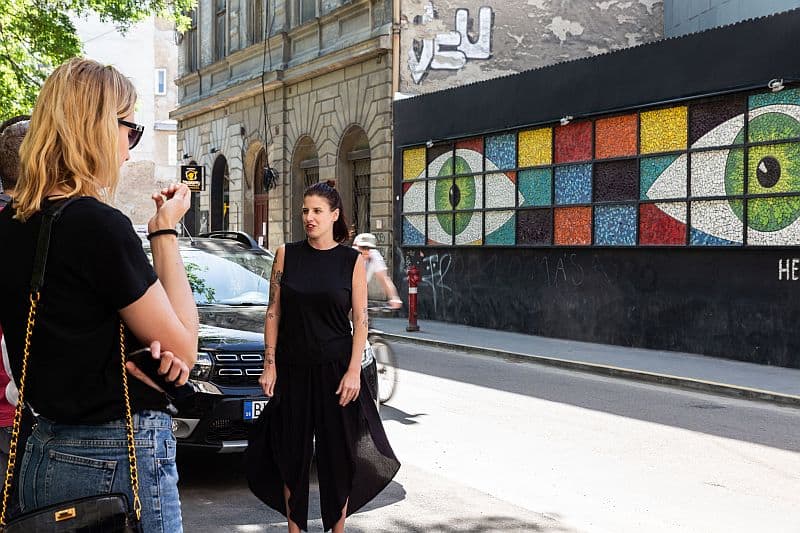
31 May An interview with Noémi Nádudvari, curator of the Színes Város Street Art Festival
We talked to Noémi Nádudvari, curator of the Színes Város Festival (Colorful City Festival), about organizing street art festivals, the state of the Budapest street art scene and their future plans.
Please talk about the goals and history of Colorful City Group!
Noémi Nádudvari: Colorful City Group is an association involved in painting large urban firewalls and making public spaces more colourful. With time our portfolio expanded, and now in addition to the development of cultural values we also support general and communication campaigns. We get commissions for applied work too, not only for art projects, so we have worked in several locations in Hungary.
The Colorful City Budapest firewall painting festival has invited young, talented artists from the Hungarian and international street art scene to paint in Budapest every year between 2014 and 2017, so that the city would get more colourful and exciting. Some of its explicit goals were to paint emphatically artistic murals, to create more innovative pieces, to show how varied this genre is, and to bring art closer to urban people.
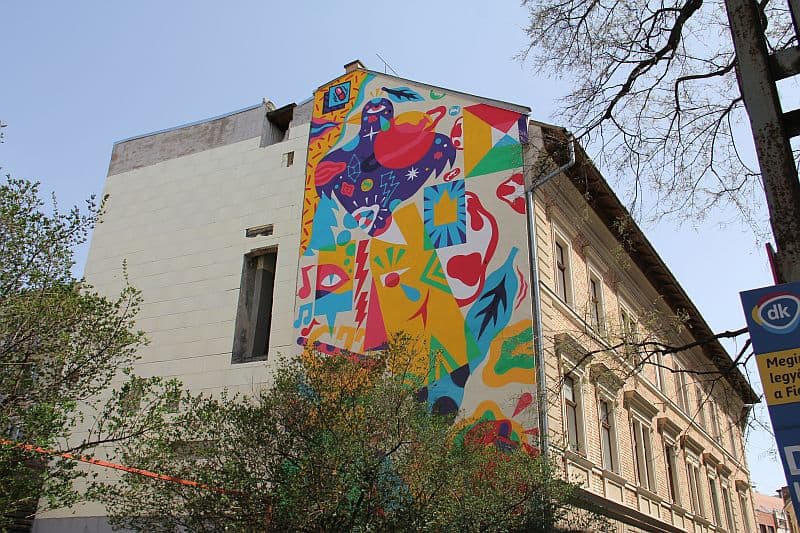
Artist: Akacorleone (PT)
What’s your background? How did you end up as an art curator?
N.N.: My degree is in aesthetics, but I studied Latin and sociology too. I have been working at Colorful City as a curator and organizer of street art festivals since 2014. My main field and interests are urban art, graffiti, street art and other creative offshoots of urban life.
I have worked at a number of contemporary art galleries and auction houses as a director. Then I left the gallery framework and started on organizing art festivals and other less definite projects. For years I have felt very strongly about public spaces in the city: I want them to be more varied, and the walls to be covered with artistic paintings.
How does organizing a street art festival work? What aspects do you take into account when choosing locations and artists?
N.N.: We did the first Colorful City Festival in 2014 to create murals of artistic and aesthetic value on large urban firewalls. This was the very first such street art festival in Hungary. The city’s leadership seemed to be open to this and we managed to find sponsors too.
Organizing the festival takes a lot of time and careful preparation. Acquiring the necessary licences is a long process: to paint a firewall one needs five different kinds of permit, and if even one of them is missing, the whole project could be in danger. Finding locations is also a long process and involves a lot of administrative work. We have to start organizing in January, if such multiple location projects are to be pulled off by the summer.
Since painting large murals is expensive, we definitely need to get sponsors. After discussing the theme of proposed paintings with them, we start hunting for locations. I rephrase the topics we agreed on with the sponsors to the language of artists. I follow the developments on the Hungarian and international street art scene and contact artists whose style fits the chosen topic.
There are a number of things to consider when choosing artists, and of course one has to keep in mind the available budget too. I travel a lot, so I have an extensive network of connections with artists, so it is easy to contact them. Instagram is also a wonderful platform for this. Artists who already painted something in Budapest will put in recommendations for others: this is a rather open scene where most people have strong feelings about street art.
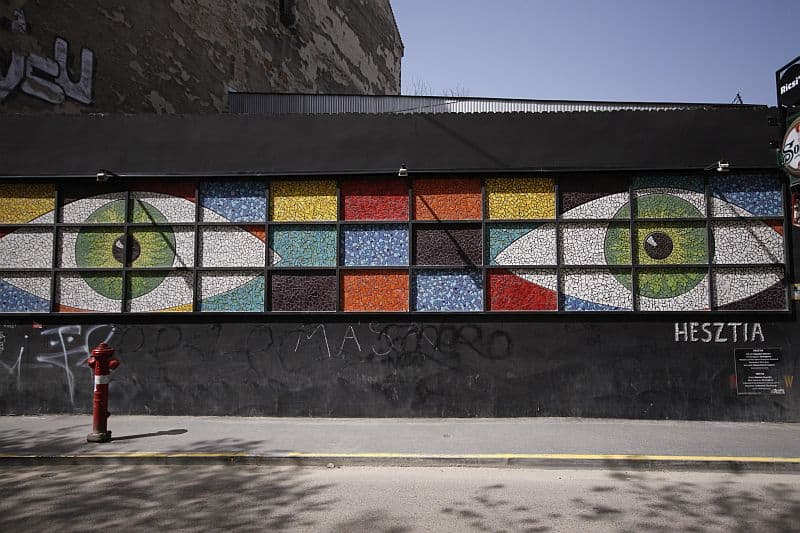
Artist: Márton Hegedűs (HUN)
What were the themes of your past festivals?
N.N: The first one, in 2014, was entitled ‘Let’s start talking to each other!’, after that, in 2015 we focused on ‘Hungarica’, things and customs that are unique and representative of Hungarian culture. In 2016 it was the relationship of water and urban life, with the main emphasis naturally on the river Danube in the middle of the city. The last festival we did, in 2017, was entitled ‘The Gastronomy of Art – The Art of Gastronomy’.
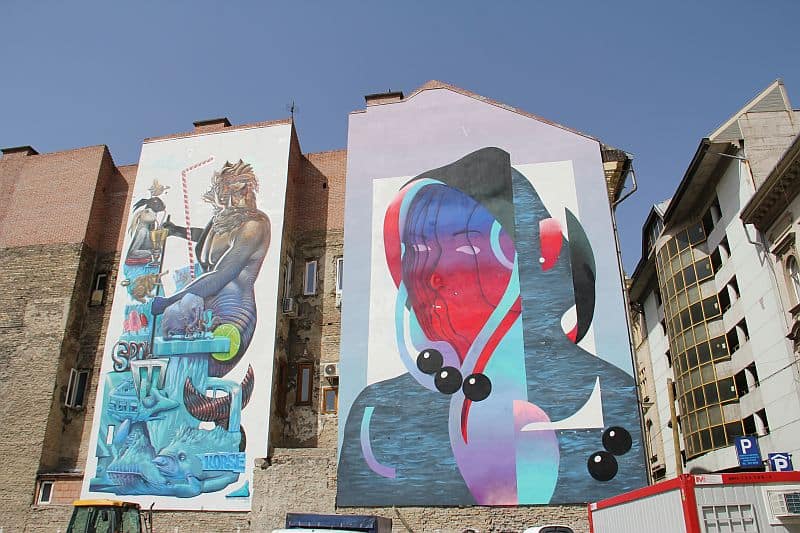
Artists: left: Spok (ES) and Korse (FR), right: Adno (RUS)
It is a relatively new thing in Hungary to see huge, empty firewalls covered in colourful murals. How did the actual residents react, and how do you think this changed the cityscape?
N.N.: The acceptance of the festival is better every year: in the first year we got a lot of feedback, and along with the favourable responses, a lot of criticism was also levelled against the pictures. There were people who found some murals too depressing. But one of our goals in organizing the festival was to show the variety of this genre, and that was why we chose artists whose styles were very different from each other.
I think it helped a lot with the response to the festival that the residents saw the artists while they were painting, and most people appreciate that painted firewalls add some visual extra to the city. I’m convinced that the cityscape is improved by street art, it helps boost tourism, and we also managed to put Budapest on Europe’s street art map.
But the Colorful City Festival also aims at generating a strong visual effect on people, make them stop in front of the paintings and think, so that a sort of interaction and dialogue can start. As such the festival has an educational purpose too.
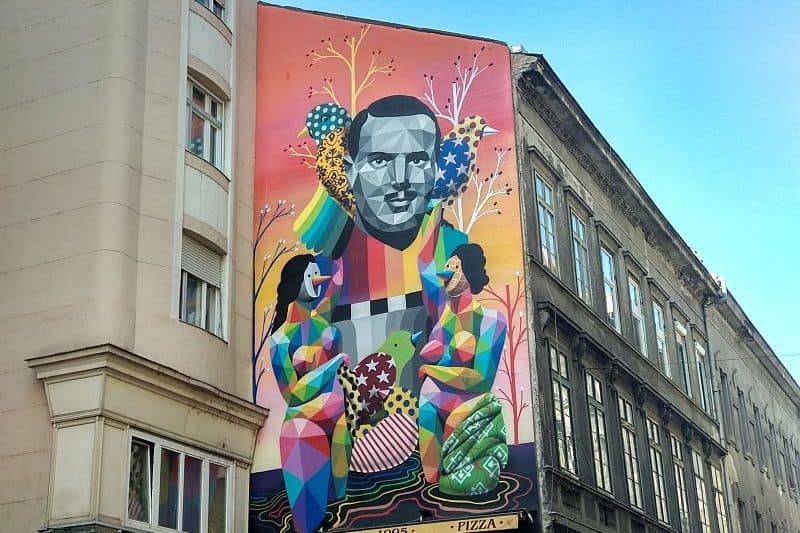
Artist: Okudart (ES)
Your painted firewalls are mostly in the inner Erzsébetváros (the Jewish district). Why is this? Do you plan to create more murals in others districts too?
N.N: One reason is that this part of the city is always rich in empty firewalls, and that makes it an ideal location for painting. But another is that this district has definitely gentrified in the last few years, this is where the ruinpubs are, there is quite a vibrant nightlife here with a lot of young people, and so street art works perfectly with the atmosphere of the 7th district. It’s also in the interest of the companies and associations who sponsor the paintings to have the art where many people will see it.
Naturally, we organize paintings elsewhere too, for example Ruben Sanchez’s excellent work is on the Buda side, and there are more than one paintings on the Buda pillars of the Erzsébet and Rákóczi bridges. But whether we can work in a given location or not often depends on how open the leadership of the district in question is. In the future, we would like to expand to as many districts as possible.
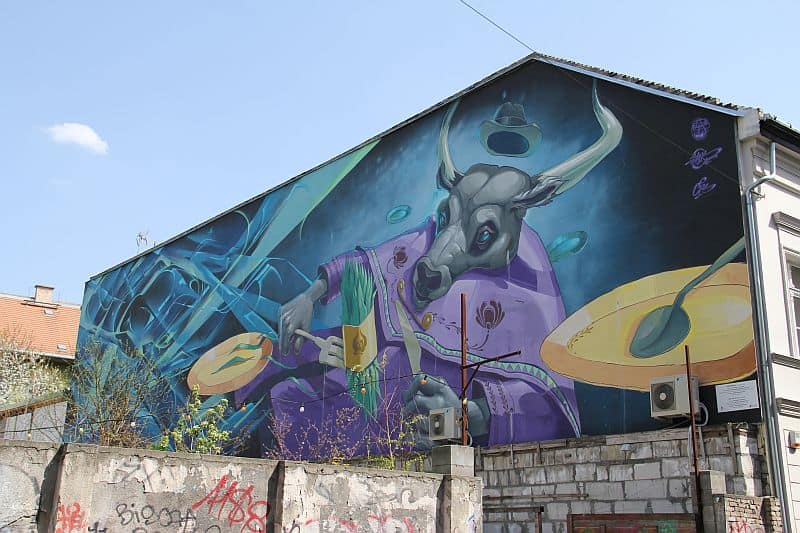
Artists: Fat Heat (HUN) and TransOne (HUN)
How do you see the Hungarian street art scene in its international context – particularly within East Central Europe?
N.N: With our Colorful City Festival, the Budapest street art scene has achieved a breakthrough in the last five years. We invited internationally acclaimed street artists, and this started a certain process and put us on the international map. Since a lot of artists visited Budapest, the city also got some serious attention.
In an international context we have a lot to make up for, but at least we can say that something started in the scene that would be important to follow up on. Sadly, the momentum was arrested momentarily and the festival is on hold: the last one we organized was in 2017. But I hope this is just a temporary pause, and we will be able to continue painting artistic murals.
Situated in a regional context I think we are somewhere in the middle. It’s a great advantage that most paintings here go up in the city centre, in the 7th district, because many of them can be seen even during the course of one walk in the city. In other cities the paintings are all over the place, not so close to each other.
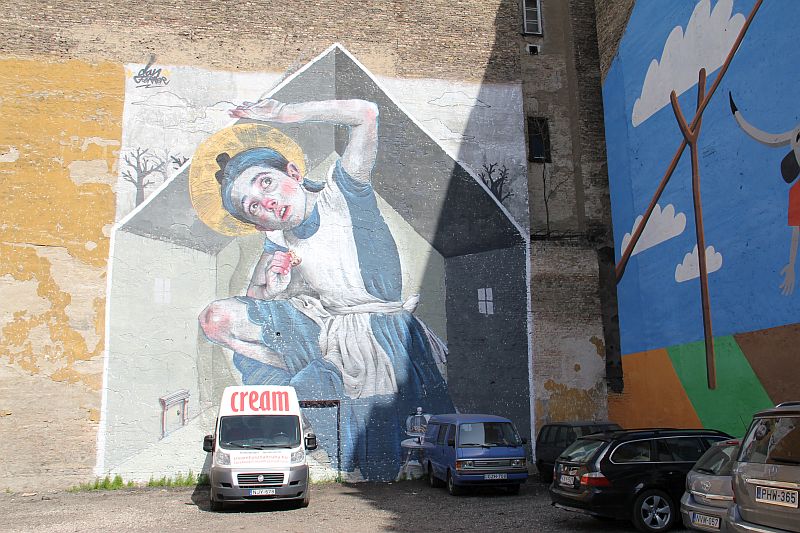
Artist: Dan Ferrer (ES)
Do you have favourite paintings in Budapest?
N.N: It’s difficult to pick one since I participated in organizing the whole thing, kept in contact with the artists, so I have emotional ties with each painting. However, if I absolutely have to pick one, I’d settle for ‘Blue in Green’, the work of Polish artists Chazme and Sape. But I love the work of the German artist HRVB and Vidam The Weird, or of Spanish artists Ruben Sanchez, Okudart and Dan Ferrer.
Fat Heat and Carlos BreakOne are Hungarian artists whose work I find exceptional.
RELATED WALKING TOUR
Discover Budapest’s street art scene and learn about the city’s contemporary culture, history and politics through these vibrant murals and street art pieces.


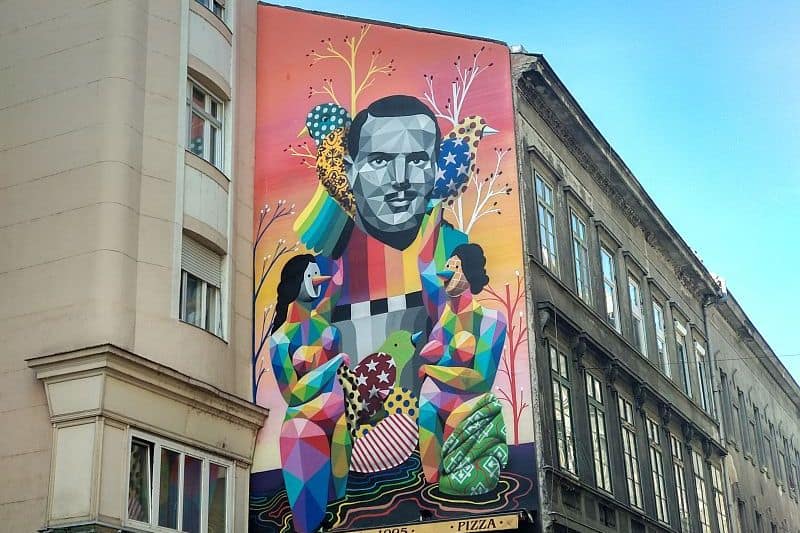
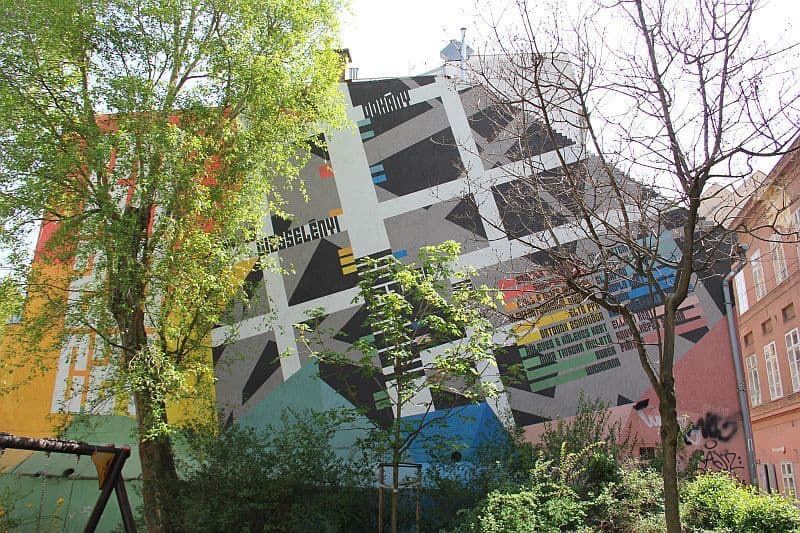
Sorry, the comment form is closed at this time.